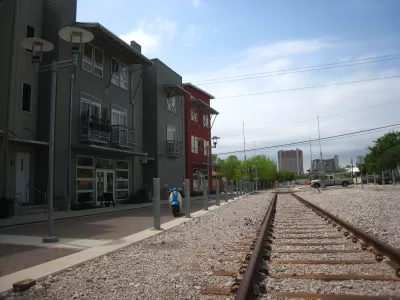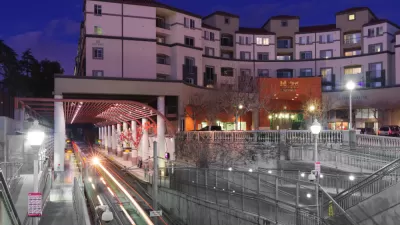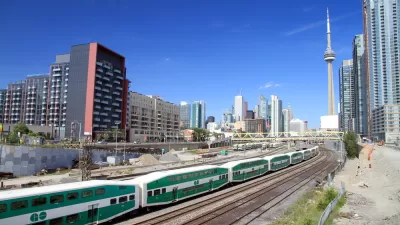The FTA has announced new funding (albeit, a small amount) through the "Transit-Oriented Development Planning Pilot Program."

"The Federal Transit Administration announced late last week that they’re now accepting applications from transit agencies until November 3, for a total of almost $20 million in available funding (for the two years since MAP-21 passed)," reports Stephen Lee Davis for Transportation for America.
Davis shares this description of the grant program from the notice provided by the FTA: "the grants will fund comprehensive planning that supports economic development, ridership, multimodal connectivity and accessibility, increased transit access for pedestrian and bicycle traffic, and mixed-use development near transit stations."
Moreover, "FTA will focus on funding the kind of planning that would not occur without federal support. Grants will fund planning around an entire transit corridor, not just individual station areas, particularly corridors where there are significant challenges to transit-oriented planning, low levels of existing development, or limited local financial capacity."
FULL STORY: New grant program to support smart development around transit lines is open for business

Planetizen Federal Action Tracker
A weekly monitor of how Trump’s orders and actions are impacting planners and planning in America.

Maui's Vacation Rental Debate Turns Ugly
Verbal attacks, misinformation campaigns and fistfights plague a high-stakes debate to convert thousands of vacation rentals into long-term housing.

Restaurant Patios Were a Pandemic Win — Why Were They so Hard to Keep?
Social distancing requirements and changes in travel patterns prompted cities to pilot new uses for street and sidewalk space. Then it got complicated.

In California Battle of Housing vs. Environment, Housing Just Won
A new state law significantly limits the power of CEQA, an environmental review law that served as a powerful tool for blocking new development.

Boulder Eliminates Parking Minimums Citywide
Officials estimate the cost of building a single underground parking space at up to $100,000.

Orange County, Florida Adopts Largest US “Sprawl Repair” Code
The ‘Orange Code’ seeks to rectify decades of sprawl-inducing, car-oriented development.
Urban Design for Planners 1: Software Tools
This six-course series explores essential urban design concepts using open source software and equips planners with the tools they need to participate fully in the urban design process.
Planning for Universal Design
Learn the tools for implementing Universal Design in planning regulations.
Heyer Gruel & Associates PA
JM Goldson LLC
Custer County Colorado
City of Camden Redevelopment Agency
City of Astoria
Transportation Research & Education Center (TREC) at Portland State University
Jefferson Parish Government
Camden Redevelopment Agency
City of Claremont





























